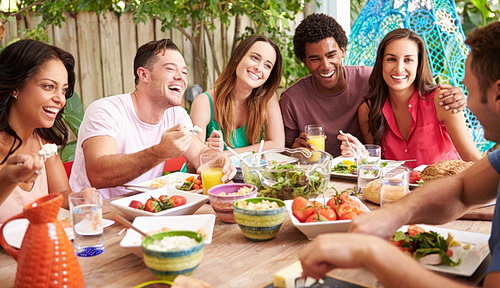
Overview
Whether toasted with cream cheese, stacked with lox, or simply plain, bagels have been a beloved part of many cultures for centuries. But have you ever wondered what goes into making these chewy, golden-brown delights and where they came from? Let’s dive into the ingredients of bagels and their fascinating origins.
The Basic Ingredients of a Bagel
At first glance, bagels might seem like just another bread product, but their unique texture and flavor come from a specific combination of ingredients that make them taste so good.
1. Flour
Any bagel’s backbone is flour, typically high-protein bread flour. This is what gives bagels their signature chewiness. The higher gluten content in bread flour creates that dense and satisfying bite we all love.
2. Water
Like any bread, bagels need water to bring everything together. However, New York-style bagels, which are considered by many to be the gold standard, are said to owe their superior taste to the city’s soft water, which has a lower concentration of minerals. Whether that’s a myth or fact, water plays a key role in the dough that makes it.
3. Yeast
Yeast is responsible for the rise of the dough. It ferments the sugars in the flour, producing gas bubbles that give bagels their structure. Some bagel recipes use commercial yeast, while others incorporate a sourdough starter for a slightly tangy flavor.
4. Salt
Salt isn’t just there for flavor. It also controls the fermentation process and strengthens the dough. Without salt, bagels would taste bland and have a weak structure.
5. Malt (or Sugar)
Traditional bagel recipes include malt syrup or malt powder, which adds a hint of sweetness and helps with browning during baking. Some modern recipes substitute sugar or honey, but malt gives bagels that classic, slightly sweet undertone.
6. Boiling Water (Often with Honey or Baking Soda)
Before bagels are baked, they go through a crucial step—boiling. This is what sets them apart from regular bread rolls. Boiling the bagels for 30-60 seconds gelatinizes the starches on the surface, giving them their signature chewy crust. In some recipes, honey or barley malt is added to the boiling water for extra flavor and shine.
The Origins of the Bagel
Now that we know what’s in a bagel, where do they come from?
Bagels have a long and rich history, dating back to the Jewish communities of Poland in the 17th century. The first recorded mention of bagels appeared in 1610 in Kraków, where they were given as gifts to women who had just given birth. The round shape was said to symbolize good luck, eternity, and the cycle of life.
These early bagels were handmade, boiled, and baked—an unchanged tradition. As Jewish immigrants moved to different parts of the world, they brought their bagel-making skills, eventually landing in North America.
How Bagels Took Over the World
While bagels remained a niche food for many years, they exploded in popularity in the early 20th century, especially in New York City, which became the bagel capital of the world. Jewish bakeries in the Lower East Side crafted fresh bagels daily, and by the mid-20th century, mass production allowed bagels to become a household staple across the U.S.
Today, bagels come in countless varieties—from classic plain and sesame to everything bagels, cinnamon raisin, and even rainbow-colored versions. Some regions, like Montreal, have put their spin on bagels, making them smaller, denser, and slightly sweeter than their New York counterparts.
Final Thoughts
At their core, bagels are made from just a few simple ingredients—flour, water, yeast, salt, and a touch of sweetness- but their history and cultural significance make them much more than just another type of bread. From their Polish-Jewish origins to worldwide fame today, bagels have stood the test of time.
So, the next time you bite into a fresh, warm bagel, take a moment to appreciate the journey it’s been on. From the Old World to your plate. And if you ever feel adventurous, why not try making your own? Just don’t forget to boil them first! 😊








